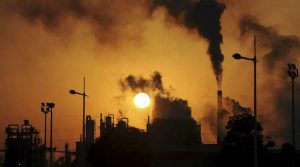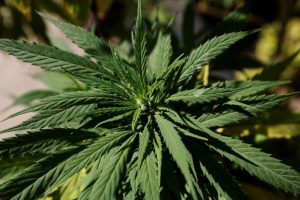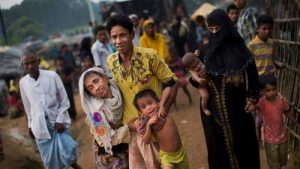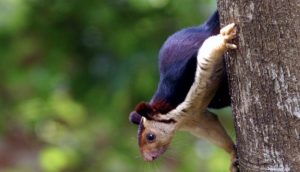Daily Current Affairs for Government Exams:
Today Current Affairs: 4th December 2020 for UPSC IAS exams, State PSC exams, SSC CGL, State SSC, RRB, Railways, Banking Exam & IBPS, etc
Table of Contents
Contents:
- State of the Global Climate provisional report:
- Permit for NRIs to cast their votes:
- Cannabis :
- Rohingya:
- Economic recovery
- Pan-STARRS1 telescope
- Malayan Giant Squirrel:
- Other important current affairs:
1.State of the Global Climate provisional report:

According to the latest State of the Global Climate provisional report by the World Meteorological Organization (WMO), the year 2020 is set to be among the three warmest on record. Also, the decade 2011-2020 would be the warmest ever.
- The final report will be published in March 2021.
- The State of the Global Climate report is published annually to keep a track of global warming.
- WMO is one of the specialized agencies of the United Nations (UN).
Key Points
The rise in Global Temperature:
- The global mean surface temperature for January-October 2020 was 1.2 degrees Celsius higher than the pre-industrial baseline (1850-1900).
- There is at least a one in five chance of it temporarily exceeding 1.5 °C by 2024.
- The Paris Agreement’s central aim is to strengthen the global response to the threat of climate change by keeping a global temperature rise this century well below 2 degrees Celsius above pre-industrial levels and to pursue efforts to limit the temperature increase even further to 1.5 degrees Celsius.
- 2020 will be one of the three hottest, just behind 2016 and 2019.
- The record heat in 2020 has been despite near-La Niña conditions prevailing in the equatorial Pacific Ocean since August and moderate La Niña conditions prevailing since October.
- The La Niña phase of the El Niño Southern Oscillation (ENSO) phenomenon generally has a cooling effect on many parts of the world.
High Temperature over Ocean Surfaces:
- 80% of ocean areas have experienced at least one marine heatwave (MHW) so far in 2020.
- Heatwave is a period of prolonged abnormally high surface temperatures relative to those normally expected.
- At the time of MHW, the average temperature of the ocean surface (up to a depth of 300 feet or more) rises by 5-7°C above normal.
- MHWs can be caused by locally formed heat fluxes between the atmosphere and the ocean or due to large-scale drivers of the Earth’s climate like the ENSO.
- There were also much more strong MHWs (43%) over the oceans in 2020 than moderate ones (28%).
- Global sea-level rise was also similar to 2019 value.This was mainly due to the increased melting of the ice sheets in Greenland and Antarctica.
Atlantic Hurricane Season:
- The season witnessed 30 named storms from June to November which is the highest number ever recorded.
Heavy Rains:
- There were heavy rainfall and flooding in many parts of Asia and Africa.
Droughts:
- South America experienced severe droughts with northern Argentina, Paraguay and western areas of Brazil being some of the worst affected.
Sea-level rise:
- Melting of ice resulted in sea level rise which is an existential concern for the small island nations.
- A significant sea-level rise by the end of the century will mean that these countries will drown in the oceans and their respective populations will be homeless.
The loss to Humanity:
- Population Movements: The climate and weather events have triggered significant population movements and have severely affected vulnerable people on the move, including in the Pacific region and Central America.
- Agricultural Losses: Brazil alone recorded agricultural losses of 3 billion American dollars.
- Loss of Human lives, Property, and Livelihoods: The most affected were the Sahel and Greater Horn regions of Africa and China, India, Korea, and Japan regions of Asia.
2. Permit for NRIs to cast their votes:

The Election Commission (EC) recently approached the Law Ministry to permit NRIs to cast their votes from overseas through postal ballots.
- Voting rights for NRIs was introduced only in 2011, through an amendment to the Representation of the People Act 1950.
- An NRI can vote in the constituency in which her place of residence, as mentioned in the passport, is located.
- She can only vote in person and will have to produce her passport in original at the polling station for establishing identity.
- According to a UN report of 2015, India’s diaspora population is the largest in the world at 16 million people.
- According to the EC proposal, any NRI interested in voting through the postal ballot in an election will have to inform the Returning Officer (RO) not later than five days after the notification of the election.
- On receiving such information, the RO will dispatch the ballot paper electronically.
- The NRI voters will download the ballot paper, mark their preference on the printout and send it back along with a declaration attested by an officer appointed by the diplomatic or consular representative of India in the country where the NRI is resident.
- The Union Cabinet passed the proposal on proxy voting rights for NRIs in 2017.
- The government then brought a Bill amending the Representation of the People Act 1950.
- The Bill was passed by Lok Sabha and was awaiting Rajya Sabha’s approval when it lapsed with the dissolution of the 16th Lok Sabha.
3.Cannabis :

The United Nations (UN) Commission on Narcotic Drugs (CND), at its 63rd session, has taken a number of decisions, leading to changes in the way cannabis (Marijuana or Hemp) is internationally regulated, including its reclassification out of the most dangerous category of drugs.
- In January 2019, the World Health Organisation (WHO) made six recommendations related to the scheduling of cannabis in UN treaties, including the deletion of cannabis and cannabis resin from Schedule IV of the Single Convention on Narcotic Drugs, 1961.
- Schedule IV is the category of drugs that are considered to have “particularly dangerous properties” in comparison to other drugs.
- The proposals were to be placed before the CND’s session in March 2019, but members voted to postpone the vote, requesting more time.
Global Decision:
- Older Status: The CND decision will remove cannabis from Schedule IV, where it was listed alongside deadly, addictive opioids, including heroin.
- Current Status: Now, both cannabis and cannabis resin will remain on Schedule I, which includes the least dangerous category of substances.
- Countries in Favour: 27 of the CND’s 53 Member States, including India, the USA and most European nations, voted in favour of the motion.
- Countries not in Favour: 25 countries, including China, Pakistan, and Russia, were not in favour and there was one abstention, Ukraine.
Cannabis
- According to the WHO, cannabis is a generic term used to denote the several psychoactive preparations of the plant Cannabis sativa.
- According to the WHO, cannabis is by far the most widely cultivated, trafficked and abused illicit drug in the world.
- The major psychoactive constituent in cannabis is Delta9 tetrahydrocannabinol (THC).
- The unpollinated female plants are called hashish. Cannabis oil (hashish oil) is a concentrate of cannabinoids (compounds that are structurally similar to THC) obtained by solvent extraction of the crude plant material or of the resin.
- According to the NDPS Act “cannabis plant” means any plant of the genus cannabis.
- ‘Charas’ is the separated resin extracted from the cannabis plant. The NDPS Act covers separated raisin, in whatever form, whether crude or purified, obtained from the cannabis plant and also includes concentrated preparation and resin known as hashish oil or liquid hashish.
The Act defines ‘ganja’ as the flowering or fruiting tops of the cannabis plant but it clearly excludes the seeds and leaves.
- The Act illegalizes any mixture with or without any neutral material, of any of the two forms of cannabis, charas and ganja, or any drink prepared from it.
- The legislature left seeds and leaves of the cannabis plant out of the ambit of the Act, because the serrated leaves of the plant have negligible THC content.
- ‘Bhang’, which is commonly consumed during festivals like Holi, is a paste made out of the leaves of the cannabis plant, and is hence not outlawed.
- Similarly, CBD oil, an acronym for cannabidiol derived from the leaves of the cannabis plant, would not come under the NDPS Act.
- The NDPS Act does not permit the recreational use of cannabis in India.
- While CBD oil manufactured with a licence under the Drugs and Cosmetics Act, 1940 can be legally used, it is not very common.
4.Rohingya:

Bangladesh has begun transferring hundreds of Rohingya refugees to Bhasan Char (a low-lying island in an area prone to cyclones and floods), with rights groups alleging that people were being coerced into leaving.
- The island was formed from a build-up of silt in the Bay of Bengal only 20 years ago, and concerns have been consistently raised about Bhasan Char’s exposure to extreme weather and distance from the mainland in emergencies since Bangladesh first raised the idea in 2015.
Rohingyas:
- They are an Ethnic group, mostly Muslims.
- They were not granted full citizenship by Myanmar.
- They were classified as “resident foreigners or associate citizens”.
- Ethnically they are much closer to Indo-Aryan people of India and Bangladesh than to the Sino-Tibetans of the Country.
- Described by UN Secretary-General Antonio Guterres as “one of, if not the, most discriminated people in the world”.
- About 860,000 Rohingya live in the world’s largest and most densely populated refugee camp in southern Bangladesh.
- The Myanmar and Bangladesh governments continue to negotiate terms for the repatriation of Rohingya refugees to Myanmar.
- According to the Ministry of Home Affairs, there are approximately 40,000 Rohingyas living in India.
5.Economic recovery:

Economy firmly on the path of a V-shaped recovery, says govt:
- The Ministry of Finance recently said that: India’s economy is firmly on the path of a V-shaped recovery after the collapse in the first quarter.
- Further improvement is expected in the third quarter, ‘notwithstanding some moderation’ in November’s indicators.
- The recovery is attributed to the unlocking process along with ‘astute’ stimulus measures.
Shapes of economic recovery:
- The Z-shaped recovery is the most-optimistic scenario in which the economy quickly rises like a phoenix after a crash. It more than makes up for lost ground (think revenge-buying after the lockdowns are lifted) before settling back to the normal trend-line, thus forming a Z-shaped chart.
- In V-shaped recovery the economy quickly recoups lost ground and gets back to the normal growth trend-line.
- A U-shaped recovery is a scenario in which the economy, after falling, struggles and muddles around a low growth rate for some time, before rising gradually to usual levels.
- A W-shaped recovery is a dangerous creature — growth falls and rises, but falls again before recovering yet again, thus forming a W-like chart.
- The L-shaped recovery is the worst-case scenario, in which growth after falling, stagnates at low levels and does not recover for a long, long time.
- The J-shaped recovery is a somewhat unrealistic scenario, in which growth rises sharply from the lows much higher than the trend-line and stays there.
6.Pan-STARRS1 telescope:

In September, the NASA-funded Pan-STARRS1 telescope detected an unknown object which followed a curved path in the sky, indicating its proximity to the Earth.
- Initially, the object was thought to be an asteroid orbiting the Earth and was hence given a name by the Minor Planet Center.
- However, scientists have now concluded that the Near-Earth Object called 2020 SO is the rocket booster that helped lift the space agency’s Surveyor spacecraft toward the Moon in 1966.
- The Surveyor-2 spacecraft was supposed to make a soft landing on the Moon’s surface in September 1966, during which time one of the three thrusters failed to ignite as a result of which the spacecraft started spinning and crashed on the surface.
- The aim of the mission was to reconnoiter the lunar surface ahead of the Apollo missions that led to the first lunar landing in 1969.
- While the spacecraft crashed into the Moon’s surface, the rocket booster disappeared into an unknown orbit around the Sun.
About Pan-STARRS1 telescope:
- The Panoramic Survey Telescope and Rapid Response System, Pan-STARRS for short, is a system for wide-field astronomical imaging, developed and operated by the Institute of Astronomy at the University of Hawaii.
- Pan-STARRS1 (PS1) is the first part of Pan-STARRS to be completed.
- The PS1 survey uses a 1.8-meter telescope and its 1.4 Gigapixel camera to image the sky.
7.Malayan Giant Squirrel:

The Zoological Survey of India (ZSI), in a first-of-its-kind study, has projected that numbers of the Malayan Giant Squirrel could decline by 90% in India by 2050, and it could be extinct by then if urgent steps are not taken.
- Headquartered at Kolkata, ZSI is a subordinate organization of the Ministry of Environment, Forest and Climate Change, established in 1916.
- It is a national center for faunistic survey and exploration of the resources leading to the advancement of knowledge on the exceptionally rich faunal diversity of the country.
Scientific Name:
- Ratufa bicolor.
Features:
- It is one of the world’s largest squirrel species that has a dark upper body, pale under parts, and a long, bushy tail.
- Unlike the nocturnal flying squirrels, giant squirrels are diurnal (active during the day), but arboreal (tree-dwelling) and herbivorous like the flying squirrels.
- India is home to three giant squirrel species and the other two are Indian Giant Squirrel and Grizzled Giant Squirrel which are found in peninsular India.
Habitat:
- It is found mostly in evergreen and semi-evergreen forests, from plains to hills at elevations of 50 m to 1,500 m above sea level.
- Globally it is distributed through Southern China, Thailand, Laos, Vietnam, Burma, the Malayan Peninsula, Sumatra, and Java.
- In India, is found in the forests of Northeast and is currently found in parts of West Bengal, Sikkim, Assam, Arunachal Pradesh, Meghalaya, and Nagaland.
- Of the roughly 1.84 lakh sq km of the squirrel’s range in Asia, about 8.5% is in India.
Significance:
- It is considered to be a forest health indicator species.
- An indicator species provides information on the overall condition of the ecosystem and of other species in that ecosystem. They reflect the quality and changes in environmental conditions as well as aspects of community composition.
Threats:
- According to the study, the squirrel and its habitat are under threat from deforestation, fragmentation of forests, crop cultivation and over-harvesting of food, illegal trade in wildlife, and hunting for consumption.
- Slash-and-burn jhum cultivation in many areas of the Northeast contribute to destruction of its habitat.
- Destruction of its habitat could restrict the squirrel to only southern Sikkim and North Bengal by 2050.
- Only 43.38% of the squirrel’s original habitat in India is now favourable to it and by 2050, the favourable zone could shrink to 2.94% of the area the species was meant to inhabit.
- The population of the squirrel in India declined by 30% over the last two decades.
Conservation Status:
- IUCN Red List: Near Threatened.
- CITES: Appendix II.
- Wildlife Protection Act, 1972: Schedule I.
Other important current affairs:
1.The Ministry of Home Affairs (MHA) released a list of the top 10 police stations in India for the year 2020.
- The Government of India selects best performing Police Stations across the country every year, to incentivize more effective functioning of police stations and bring healthy competition among them.
- The list was in accordance with Prime Minister Narendra Modi’s directions while addressing the 2015 Directors General of Police (DGP) Conference in Kutch, Gujarat.
- Here are India’s top 10 police stations for the year 2020:
- Nongpok Sekmai (Thoubal, Manipur)
- AWPS-Suramangalam (Salem, Tamil Nadu)
- Kharsang (Changlang, Arunachal Pradesh)
- Jhilmili (Surajpur, Chhattisgarh)
- Sanguem (South Goa, Goa)
- Kalighat (North and Middle Andaman, Andaman and Nicobar Islands)
- Pakyong (East district, Sikkim)
- Kanth (Moradabad, Uttar Pradesh)
- Khanvel (Dadra and Nagar Haveli, Dadra and Nagar Haveli)
- Jammikunta Town (Karimnagar, Telangana)
2.The US Justice Department is investigating an alleged bribery scheme that was directing money to officials in the White House in exchange for a presidential pardon or commutation.
- US President has the constitutional right to pardon or commute sentences related to federal crimes.
- This power is granted without limit and cannot be restricted by Congress.
- Similarly, Clemency is a broad executive power, and is discretionary- meaning the President is not answerable for his pardons, and does not have to provide a reason for issuing one.
- Limitations:
- This power cannot be exercised in cases of impeachment.
- The power only applies to federal crimes and not state crimes.
- Clemency powers of the Indian President under article 72:
- It says that the President shall have the power to grant pardons, reprieves, respites or remissions of punishment or to suspend, remit or commute the sentence of any person convicted of any offence.
- The President can exercise these powers:
- In all cases where the punishment or sentence is by a court martial;
- In all cases where the punishment or sentence is for an offence against any law relating to a matter to which the executive power of the Union extends;
- In all cases where the sentence is a sentence of death.
3.Rs. 200-crore worth Lucknow Municipal Corporation (LMC) bonds have been listed on the Bombay Stock Exchange (BSE).
- Lucknow becomes ninth city to raise municipal bonds, incentivised by the Ministry of Housing and Urban Affairs (Mohua) under Mission Amrut.
- BSE is the oldest stock exchange in India as well as Asia.
- A municipal bond (muni) is a debt security issued by a state, municipality or county to finance its capital expenditures, including the construction of highways, bridges or schools.
- Through muni bonds, a municipal corporation raises money from individuals or institutions and promises to pay a specified amount of interest and returns the principal amount on a specific maturity date.
- These are mostly exempt from federal taxes and from most state and local taxes, making them especially attractive to people in high-income tax brackets.
4.Cyclone Burevi has made landfall on Sri Lanka’s Northern and Eastern provinces, before heading towards south India.
- This comes days after Cyclone Nivar hit the Puducherry coast.
- Named by:
- Maldives
- Burevi vs Nivar:
- Cyclone Burevi would not strengthen beyond the intensity of a cyclonic storm because of upwelling caused by Nivar.
- Upwelling is the process in which cooler waters from lower ocean surfaces are pushed towards upper ocean surfaces.
- In the absence of warm sea surface conditions, any cyclone, in this case, Burevi, will not get enough fuel to intensify further while at sea.
- Further, interaction with landmass has slowed its movement and intensity.




